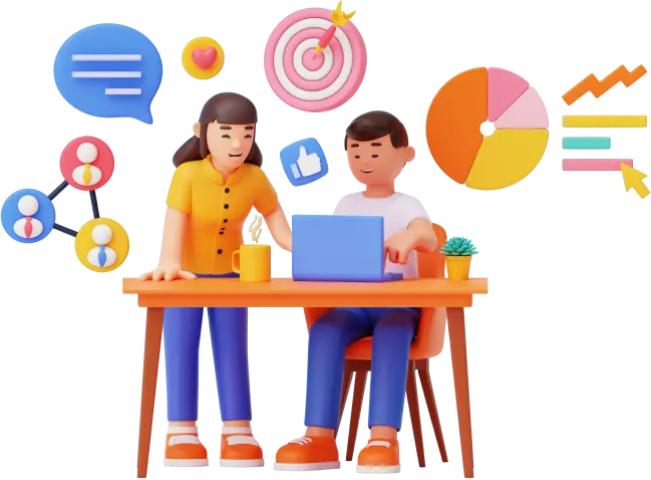UI/UX design services encompass the processes and practices involved in creating user interfaces (UI) and user experiences (UX) that are both aesthetically pleasing and functionally effective. These services aim to enhance the overall experience of users interacting with digital products, such as websites, mobile apps, and software applications ensuring that they are intuitive, user-friendly, and meet the needs of the target audience Here's a breakdown of what UI/UX design services typically include:
Key Components of UI/UX Design Services:
#### 1. User Research:1. **User Research:**
- User Interviews and Surveys: Gathering qualitative and quantitative data from potential users to understand their needs, preferences, and pain points.
- Persona Development: Creating detailed user personas that represent different segments of the target audience.
- User Journey Mapping: Mapping out the steps users take to achieve their goals, identifying potential obstacles and opportunities for improvement.
#### 2. Information Architecture:2. **Information Architecture:**
- Sitemap Creation: Organizing and structuring the content of the website or application to ensure logical navigation and easy access to information.
- Wireframing: Developing low-fidelity sketches of the layout and structure of pages or screens to plan the placement of elements and content.
#### 3. Interaction Design:3. **Interaction Design:**
- Prototyping: Creating interactive prototypes that simulate the user experience and allow for testing of functionality and flow.
- Usability Testing: Conducting tests with real users to gather feedback on the usability and effectiveness of the design, identifying areas for improvement.
#### 4. Visual Design:4. **Visual Design:**
- UI Design: Crafting the visual elements of the interface, including color schemes, typography, icons, buttons, and other graphical elements.
- Branding: Ensuring that the design aligns with the brand’s identity and guidelines, creating a cohesive and recognizable look and feel.
#### 5. Responsive Design:5. **Responsive Design:**
- Multi-Device Compatibility: Ensuring that the design adapts seamlessly to different screen sizes and devices, providing a consistent experience across desktops, tablets, and smartphones.
#### 6. Accessibility:6. **Accessibility:**
- Inclusive Design: Designing interfaces that are accessible to users with disabilities, following best practices and guidelines such as WCAG (Web Content Accessibility Guidelines).
#### 7. User Interface Development:7. **User Interface Development:**
- Front-End Development: Translating the visual design into code using HTML, CSS, JavaScript, and other front-end technologies.
- Design Systems and Style Guides: Creating reusable components and guidelines to ensure consistency and efficiency in future design and development efforts.
#### 8. Continuous Improvement:8. **Continuous Improvement:**
- User Feedback and Analytics: Continuously collecting and analyzing user feedback and behavioral data to identify areas for ongoing improvement.
- Iteration: Making changes based on user feedback and data insights to enhance the user experience over time.












